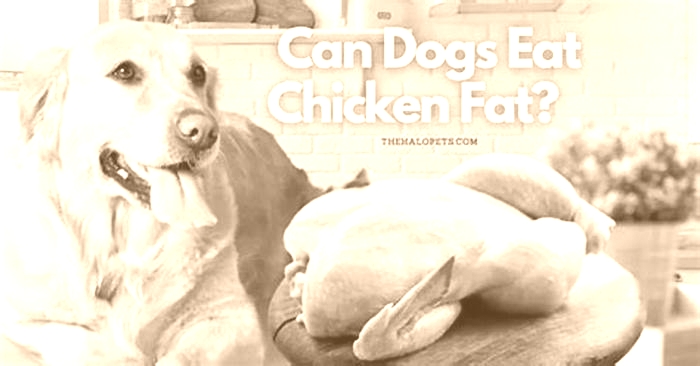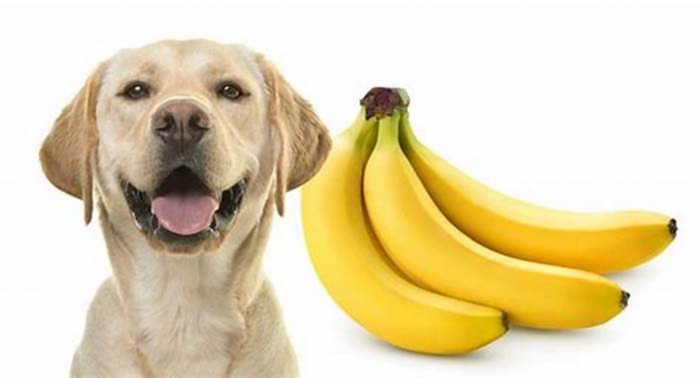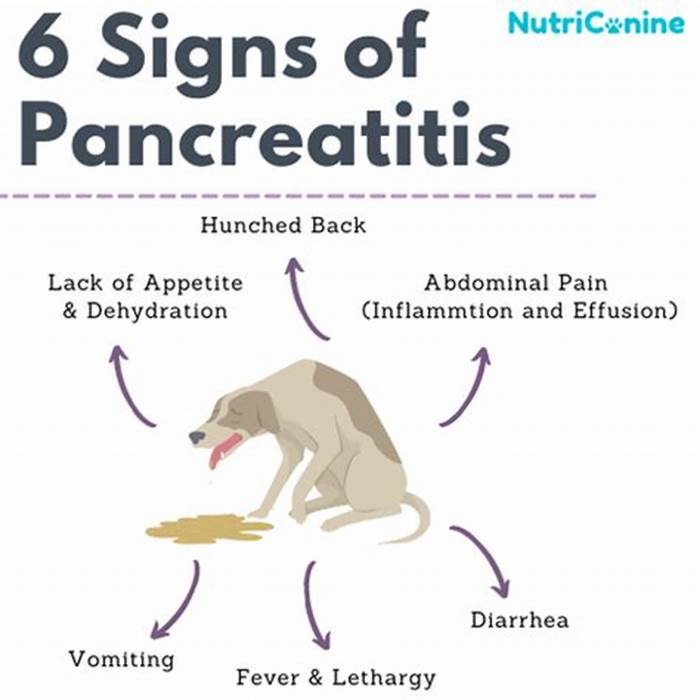Is chicken too fatty for dogs

Can Dogs Eat Chicken Legs?

This and many other similar questions of what dogs can and cannot eat trouble many pet parents.
The confusion is mostly centered around chicken legs, feet, wings, necks and chicken bones in general.
Since chicken is a very popular meat, with about 9 billion chickens killed for their flesh every year in the US alone.
Naturally, there will be plenty of chicken legs, meat and bones for our pets to feast on.
Well, to clear up any confusion, dogs can eat chicken legs, now thats the good news.
But the bad news is that it depends on how the chicken legs were prepared.
Can dogs eat chicken skin?
Cooked lean meat is great for dogs, especially skinless chicken and turkey meat.
But chicken skin is not good for dogs to eat because of the high fat content in chicken skin.
When dogs eat chicken skin, the high fat content can trigger a painful bout of gastrointestinal distress or pancreatitis.
And even if your dog doesnt have a negative reaction to eating chicken skin, too much fat in their diet will leave them susceptible to obesity.
Animal fats or the fatty parts of meat are never good for dogs, the best meat for dogs is lean meat which is easily digestible.
Never give your dog the skin from chicken, turkey or the fatty parts of meat. Lean meat that is properly cooked, with no seasoning and the bones removed, are the best type of meat for dogs.
Should dogs eat chicken leg meat?
Yes, dogs can eat chicken leg meat.
Skinless, boneless chicken leg meat is great for dogs, especially the thighs.
However, the meat should be properly cooked to avoid possible infection.
Chicken feet are also great for dogs because they contain glucosamine, which has great benefits for your dogs joints.
Chicken meat should be thoroughly cooked and deboned before giving it to your dog.
You can give your dog raw chicken bones to chew on, but be mindful of the risks associated with that and make sure that you supervise them while they chew on it.
Since chicken feet and bones are small, they should not be given to big dogs, only small dog breeds (not puppies with milk teeth) should be given chicken feet or bones, and they should be supervised the whole time they chew.
How does chicken leg meat compare to chicken breast meat or turkey leg meat?
There is some difference between chicken leg meat and chicken breast, but the nutritional difference between these different parts of chicken is minimal.
First, chicken breast is white meat and has a lower fat content, while chicken legs are classified as dark meat and are fattier than chicken breasts.
Although they differ in fat and calorie content, both chicken legs and breasts have approximately the same amount of iron, sodium, and good cholesterol.
When placed side by side, a 3-ounce skinless chicken breast has about 140 calories, 3 grams of fat, while a 3-ounce skinless chicken thigh has about 164 calories and 9 grams of fat.
And the same 3-ounce of skinless turkey thigh contains about 155 calories and 6 grams of fat. So, the clear winner for your dogs here is the meat with fewer calories and less fat, which is obviously the skinless chicken breasts.
Can dogs eat chicken leg bones?
Well, there is no simple answer to this question. Actually, the answer is yes and no. Dogs can or cannot eat chicken leg bones. First off, cooked chicken bones should never be given to bone no matter the condition because these bones pose real risks to your dogs health.
Cooked bones become brittle and splinter into smaller jagged pieces when chewed on. And each small piece can get lodged in your dogs throat and cause a painful tear or block a part of their gastrointestinal tract. The only acceptable way to feed dog chicken leg bones is if the bones are raw. Dogs can eat raw chicken leg bones, but there is also a caveat here.
Chicken is a small animal and chicken bones are naturally small too, therefore giving a large dog, who loves to gulp things down, a chicken bone can be very risky if they swallow the bone whole without properly chewing it first.
This can cause an obstruction along the digestive tract. You should be very careful with giving dogs chicken bones. Only adult small dog breeds (or dogs that take their time to properly chew their food) should be given chicken bone, and they should be well-supervised with the bone.
What is the best way to use cooked chicken leg bones with your dog?
There is no best way to use cooked chicken leg bones with your dog because dogs should not eat cooked chicken leg bones. Never give your dog cooked chicken leg bones.
Can dogs eat raw chicken legs?
Yes, dogs can eat raw chicken legs. Raw chicken legs, especially chicken feet, are rich in glucosamine and chondroitin. Chewing on chicken feet can help your dog maintain healthy joints, and reduce joint pain caused by inflammation, age or arthritis. If you intend to give your dog raw chicken feet or meaty chicken legs, make sure that you supervise them while they chew.
Chicken bones are smaller and less dense than beef bones, so its much easier for dogs to chew and digest chicken bones. Some dogs may want to swallow large pieces of bones, which can be a problem. If you give your dog chicken bones, encourage them to chew it before they swallow and watch them do it.
Chicken and turkey bones are much lighter than beef bones, they are also easy for dogs to chew and digest. In addition to chicken legs and feet, chicken neck, wings and thighbones are also great for dogs.
Pros
- High in protein and easily digestible
- Great for teeth-cleaning
- Rich in vitamins and nutrients
- Excellent source of glucosamine and chondroitin
- Great for bone and joint health
Cons
- Possible bacteria contamination
- Possible choking hazard and injuries (which is why dogs should be supervised)
Can dogs eat frozen chicken legs?
Dogs can eat frozen chicken legs, but there are still very important considerations. First, freezing chicken doesnt kill the harmful bacteria contaminants, in case thats what youre thinking. Second, freeze-drying is a more reliable way of killing bacteria while maintaining the freshness and natural flavors of nutrients of chicken legs.
Its vital to know that feeding your dog chicken bones can be dangerous, depending on how the bones are prepared. Chicken bones that have been cooked, boiled, or fried should be avoided. The high temperatures associated with cooking bones makes them dry and brittle and prone to splintering and shattering, resulting in serious injury.
A good alternative to raw and cooked chicken bones is freeze-dried or dehydrated chicken feet. For instance, puffed chicken feet that were dried in a dehydrator to seal in the flavor and minerals are great for dogs.
Pros
- High in protein and easily digestible
- Helps to improve dental hygiene
- Improves joint health
- Rich in vitamins and nutrients
- High in glucosamine and chondroitin
Cons
- Possible bacteria contamination (frozen meat still contain bacteria which become active once the meat thaws)
Can dogs eat fried chicken legs?
Fried chicken is not healthy for dogs, and you should never give your dog any fried chicken, even when theyre begging for it. Fried foods are generally bad for dogs. A dogs diet needs to contain very little oil and greasy stuff, because of the possibility of pancreatitis. Greasy fried chicken can trigger a painful episode of pancreatitis, especially if your dog is prone to this condition.
Just like chicken skin, fried chicken is very fatty and an unhealthy food for any dog at all. If you enjoy KFC very often, and would love to share some of it with your dog, please dont do it. For the sake of your dogs health, you have to definitely keep that away from them.
Besides the fact that KFC is obviously fried chicken, the recipe (with the secret list of 11 spices and herbs, including garlic salt, ginger, celery salt, oregano, etc.) contains many ingredients that are not good for dogs.
Are chicken legs more dangerous to dogs than chicken wings?
No, chicken legs are not more dangerous to dogs than chicken wings. Chicken bones (be it legs, wings or neck) by themselves are not harmful to dogs. The problem arises when your dog doesnt chew them properly or swallows them whole.
As canines, dogs are equipped with the right set of teeth for chewing bones, and are able to chew chicken bones. But, they need to be closely watched because impatient or greedy dogs tend to gulp down their food, even bones, and thats what can cause problems for them.
[10] What are the symptoms of a bone getting stuck?
If your dog has a bone stuck in their teeth, gum or throat, the symptoms you may notice will be your dog pawing, scratching or constantly licking parts of their mouth, or gagging or retching if the bone is stuck in their throat.
You may also notice restlessness, persistent gulping, trouble breathing, trouble swallowing, drooling or regurgitation. The symptoms you observe will depend on where the bone is stuck and the severity of the problem.
What should you do if part of a chicken leg gets stuck?
If you notice your dog behaving strangely after you gave them a bone, you should contact your vet ASAP. Your veterinarian will determine exactly where the bone is stuck and remove it. If the bone is not deeply lodged in the throat, your vet may be able to remove it without surgery. But if the bone is stuck in the throat or deep in the esophagus, then surgery may be required to get it out.
Conclusion
Dogs can eat chicken legs, they are healthy, very nutritious, and a rich source of proteins.
However, chicken leg meat should be properly cooked with minimal seasoning and deboned before serving your dog.
Also, chicken feet and bones are good for dogs, but only when they are raw or freeze-dried. Never give your dog cooked bones to avoid a painful accident.
Small chunks of boiled skinless boneless chicken thigh in your dogs food adds the perfect dose of proteins to your doggies diet.
Photo credits
Photo by Amy Ross on Flickr
Fats for Dogs
Fat usually gets a bad rap, but its actually an important nutrient for dogs. Pet parents need to ensure their dogs get the right amounts and the right types of fat in their diets. This is made easier because, unlike with people, too much bad fat in a dogs diet doesnt have much of an effect on their cholesterol levels and their risk of heart attack or stroke.
Heres what you should know about the type and amount of fat dogs need.
Do Dogs Need Fats in Their Diet?
Fats are an important part of a dogs diet, but its helpful to divide fats into two types to understand their different functions.
Triglycerides
The fats most commonly found in the body and the diet are triglycerides, which are composed of three fatty acids attached to a glycerol molecule.
In the diet, triglycerides:
In the body, triglycerides:
Store energy
Store essential fatty acids
Provide cushioning
Reduce heat loss
Transport molecules
Are structural elements in cell membranes
Help conduct nerve impulses
Fatty acids
Individual fatty acids play many roles in cell structure and function. Only small amounts of fatty acids are needed in the diet, but they are vitally important. Here are a few of their most noteworthy roles:
Omega-6 fatty acids like linoleic acid and arachidonic acid promote skin and coat health.
Omega-3 fatty acids like eicosapentaenoic acid (EPA) and alpha-linolenic acid (ALA) reduce inflammation.
Docosahexaenoic acid (DHA), an omega-3 fatty acid, encourages healthy development of the nervous system and eyes.
Fatty acids can be divided into two categories: essential and nonessential.
Essential fatty acids (linoleic acid and alpha-linolenic acid for dogs) must be supplied by the diet because the body cant make enough of them on its own.
Nonessential fatty acids can be made by the body, but higher levels may be necessary at certain times of life. For example, DHA is added to high-quality puppy diets to promote brain and eye development.
Sources of Fats for Dogs
Triglycerides and fatty acids are part of a variety of ingredients that are commonly found in dog foods. Animal sources like chicken fat or beef fat provide a lot of triglycerides and arachidonic acid. Ingredients like fish oil, purified algal oil, and flaxseed oil add omega-3 fatty acids, while corn oil, soybean oil, sunflower oil, and canola oil contain primarily omega-6 fatty acids.
All of these (and other) ingredients can be healthy sources of fats and fatty acids when used in combination. Whats most important is that a dogs diet provides an appropriate level of overall fat (triglycerides), all essential fatty acids, and a good balance between omega-6 and omega-3 fatty acids.
How Much Fat Does My Dog Need?
For a dog food to be labeled nutritionally complete and balanced, the manufacturer must follow guidelines from the Association of American Feed Control Officials (AAFCO). The AAFCO minimum crude fat level for dogs is 5% for adults and 8% for puppies. The term crude fat is used on nutrition labels to note how much total fat is included in the product. The word crude says nothing about the types of fats or their quality; it simply refers to the method used to test the products fat level.
The ideal fat content of a dogs diet will depend on many factors. Growing puppies, dogs that are pregnant or nursing, very active dogs, and dogs who need to gain weight generally need higher fat levels. Dogs that are overweight, inactive, or suffer from certain types of health conditions like pancreatitis or hyperlipidemia can benefit from low-fat diets.
Talk to your veterinarian if you have concerns about the amount or types of fat in your dogs diet.
How to Calculate How Much Fat Is in Your Dogs Food
AAFCOs nutrient guidelines are reported on a dry matter basisthat is, the percentage of the nutrients if all the water were taken out.
Dry diets contain so little water that you can look at the crude fat level on the guaranteed analysis panel on the package to get a general idea of how much fat the food contains.
But if you feed wet food, youll need to do some math:
Find the percent moisture listed in the guaranteed analysis and subtract that number from 100. This is the percent dry matter for the food.
Divide the fat percentage on the label by the percent dry matter for the food and multiply by 100. The resulting number is the fat percentage on a dry matter basis.
For example, a canned food label might list its moisture content as 82% and its crude fat as 3%. To calculate the foods fat level on a dry matter basis, your calculations would be 100-82=18 and then 3/18 x 100 = 16.7% fat
Should You Supplement Your Dogs Diet With Certain Fats?
As long as youre feeding foods that meet AAFCO guidelines, you do not need to worry about adding extra triglycerides to your dogs diet. In fact, doing so can be dangerous.
Feeding dogs high-fat foods, including fatty human foods like meat trimmings, can lead to a potentially life-threatening condition called pancreatitis. And because fats contain almost three times as many calories as proteins and carbohydrates, adding extra fat to a dogs diet can lead to obesity.
On the other hand, supplementing your dogs diet with omega-3 or omega-6 fatty acids can be beneficial. Veterinarians often recommend omega-3 fatty acid supplements as part of the treatment for inflammatory diseases like osteoarthritis or allergic skin disease. Omega-3 fatty acids can also play a role in the treatment of heart disease and cancer.
Salmon oil, other cold-water fish oils, algal oils, and to a lesser extent, flaxseed oil, are excellent sources of omega-3 fatty acids for dogs. Dogs with skin problems may also benefit from omega-6 fatty acid supplementation.
Talk to your veterinarian if you have concerns about the amount or types of fat in your dogs diet.
Featured Image: iStock/O_Lypa









